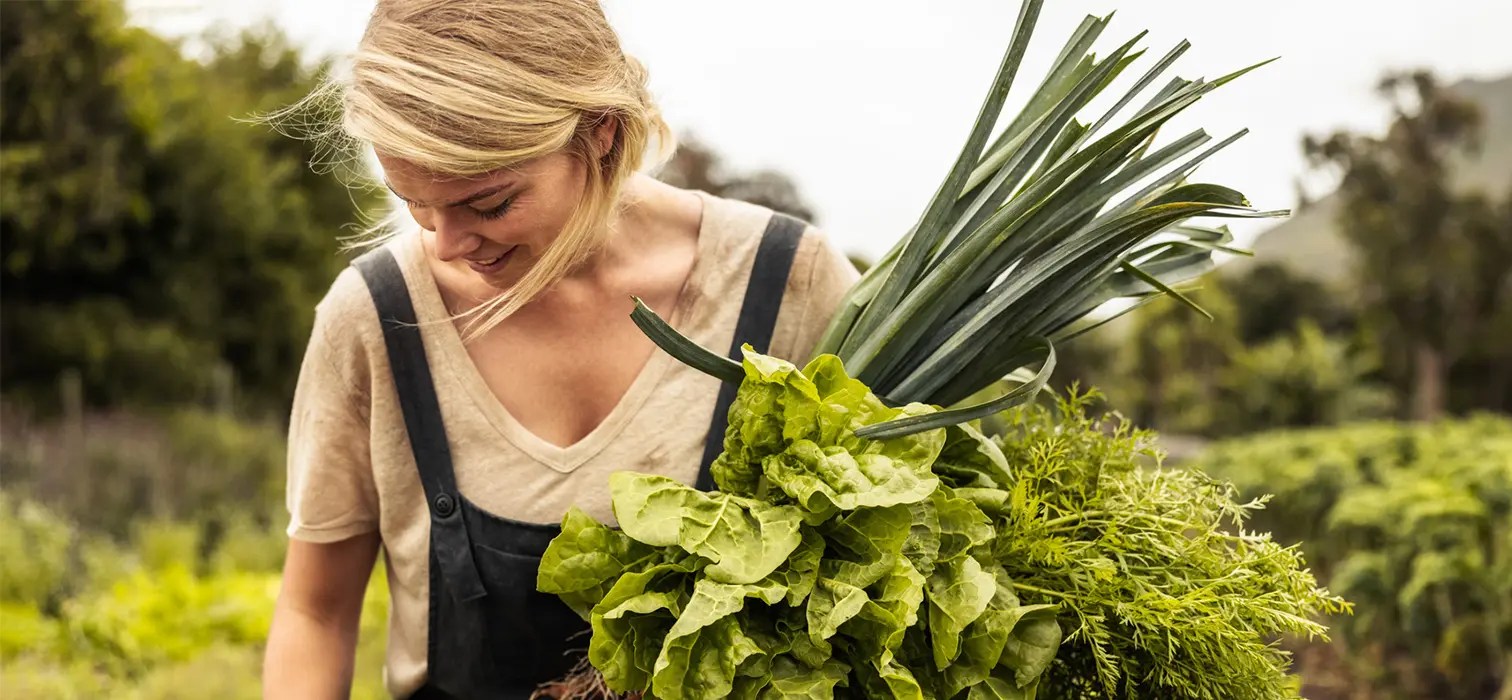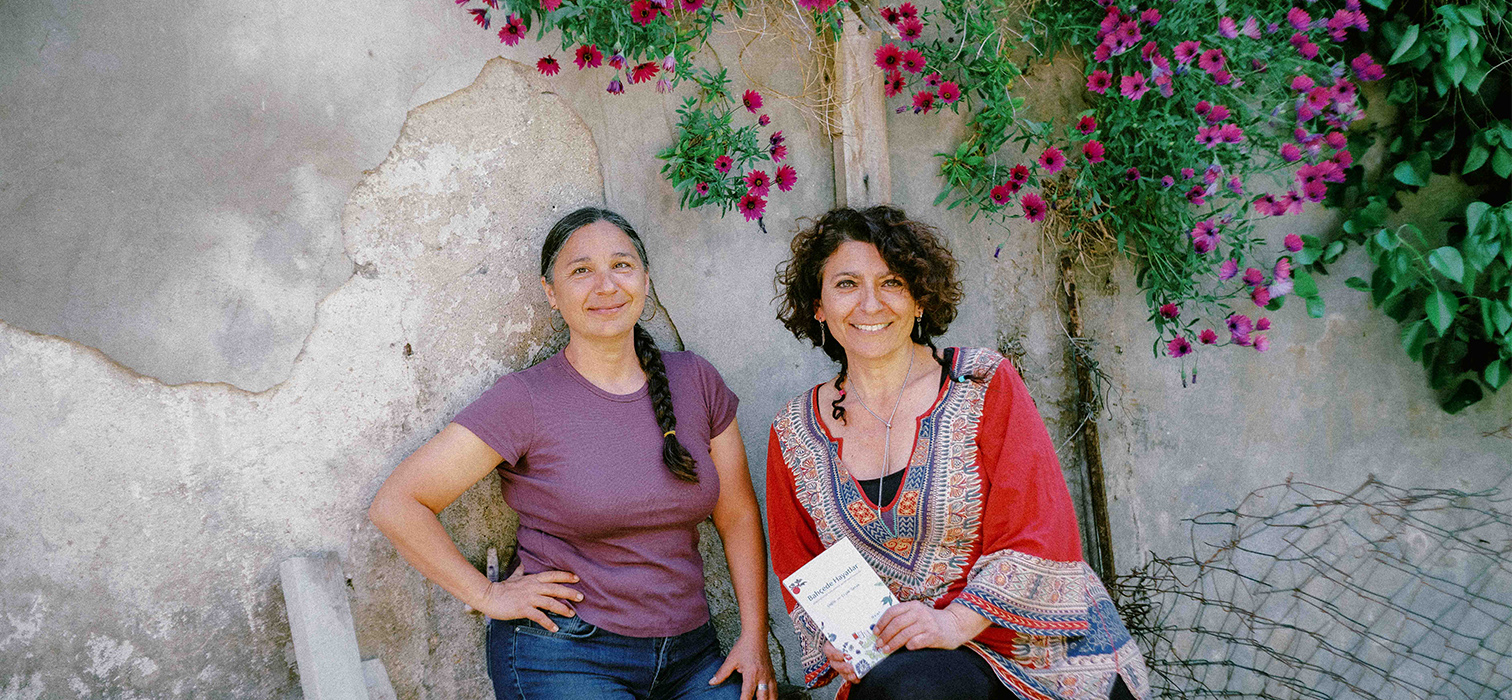
In a world where food justice, local seeds, and access to clean food are gaining increasing importance, we spoke with sisters Çağla Öztek and Çiçek Öztek about the significance of urban gardening—from seed to table—and their new book, Bahçede Hayatlar…
Bahçede Hayatlar is a book written by two sisters whose lives genuinely revolve around their garden. Although city life and work have occasionally pulled them away, the garden has always remained at the center of their lives. Çağla is a journalist friend I’ve known for many years. While growing the tomato seedlings she had planted on my tiny balcony, I learned so many valuable things from her—watering, fertilizing, and more. I’d like to take this opportunity to thank her. Her sister Çiçek has worked in publishing and editing for many years while also being a committed urban gardener. If you dream of creating your own small garden or greening your balcony, Lives in the Garden is the book for you.
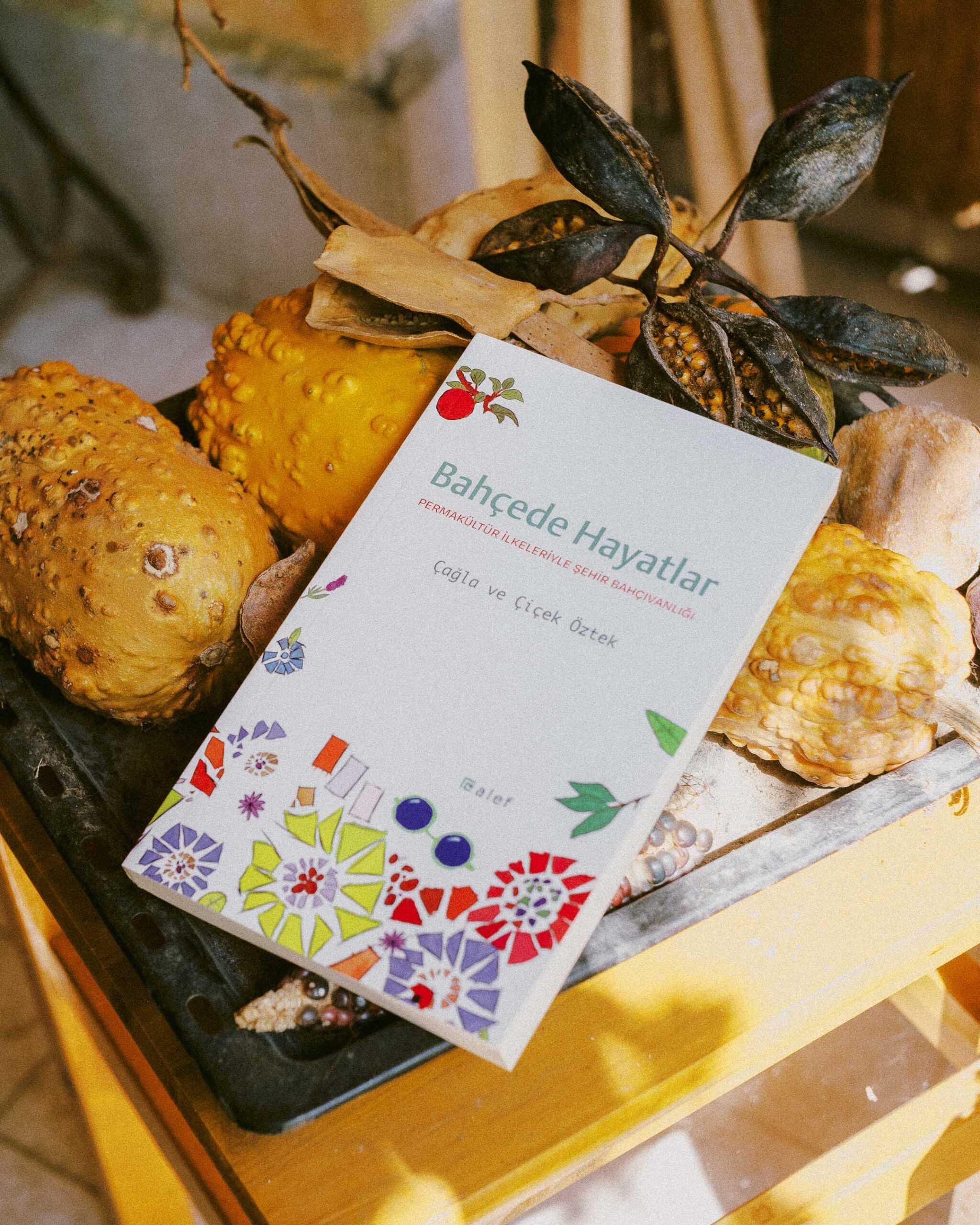
First, I’d like you to introduce yourselves a little…
Çağla: We were born in Ankara. We are the children of an apartment building next to Ankara’s vineyards. We were lucky to grow up raiding fruit trees in the neighborhood. Our apprenticeship began in the garden of our family apartment in Kadıköy. Later on, our bond with the soil grew weaker. In the meantime, we both graduated from ODTÜ and became working mothers. I studied Political Science and mostly introduced myself as a journalist, while my sister, who studied Electrical Engineering, introduced herself as a publisher and translator. Years later, an apple seed, two saplings, a stubborn plum tree that insisted on bearing fruit, mulberries brought by birds, and a longing for tomatoes freshly picked from our father’s vine led us back to our neglected, overgrown garden. I’ve been a professional guide for the past ten years; my sister is still working as a translator and editor—but when the moment is right, we take pride in calling ourselves urban gardeners.
Both of you are graduates of METU. How did a journalist with a degree in political science and an editor with a degree in electrical and electronic engineering end up becoming urban gardeners? And not just that—you wrote a book?
Çiçek: When we were little, we used to go out into our garden in Bahariye with our mother, pulling weeds and doing small gardening tasks. Both of our homes were always filled with plants, and we’ve always been curious about planting things—taking cuttings here and there and growing them at home or on the balcony. During the summers we spent in Ilıca, Tekirova, and Dikili, we loved digging in the garden, watering, planting flowers, buying fruit saplings from the market nursery, and picking eggplants, peppers, and tomatoes from the abandoned vegetable garden next door after harvest. But this hobby turned into something more serious in 2019, when we decided to return to our garden, which had long been left wild. It started with vegetable seedlings from the Egyptian Market—then came the seed passion and the madness of collecting and growing from seeds. Urban gardening became a rising trend among people confined to their homes during the pandemic, but we now see that our return to the garden actually began before then.
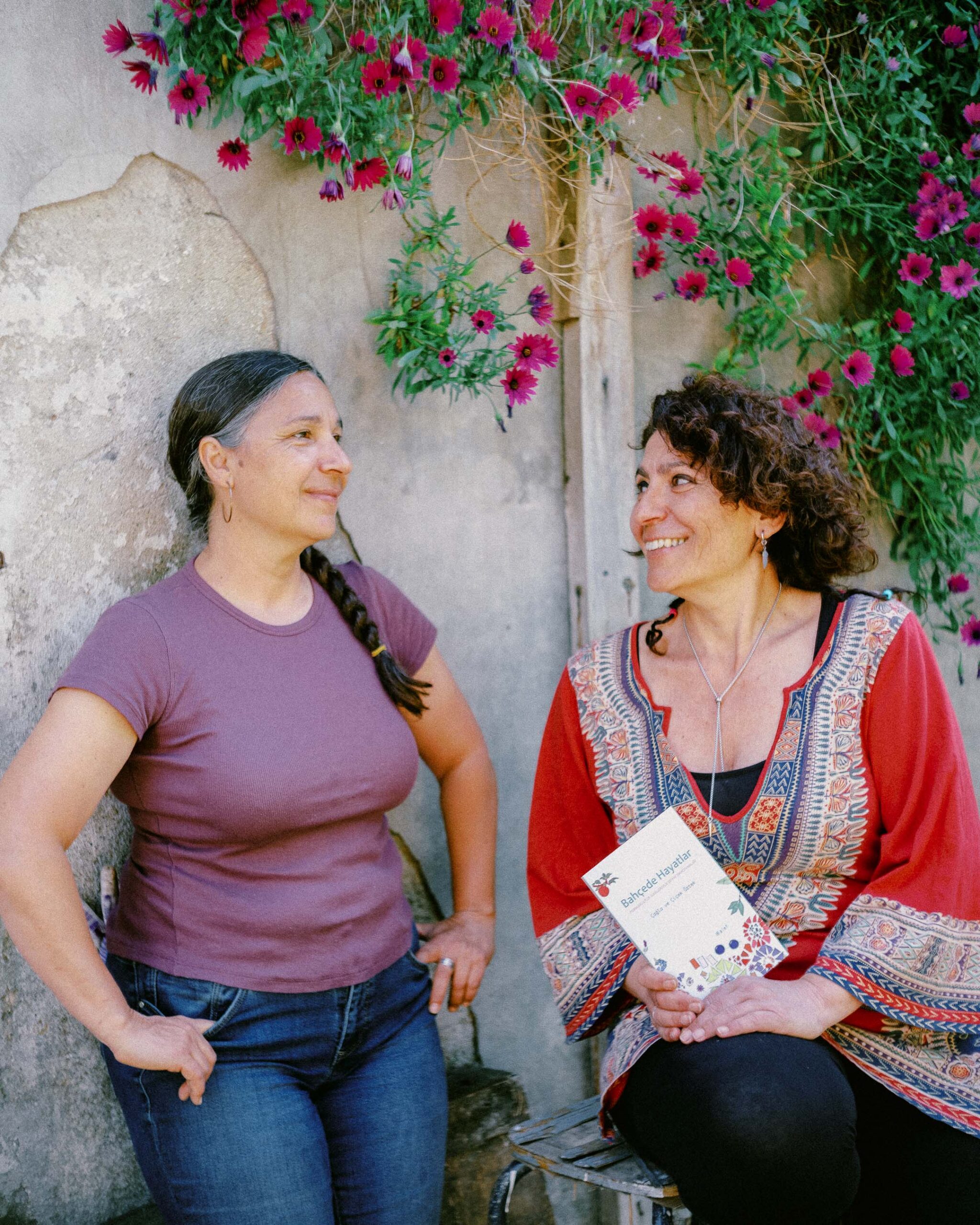
How was it for two sisters to write a book?
Çiçek: After spending a few years learning, planting, harvesting, and experimenting in the garden, we were inspired by two English sisters who had written Old Wives’ Lore for Gardeners, published in Turkish by ALEF at the time. That’s when we said, “Let’s write a book too, and share what we know and our enthusiasm with the whole world.”
Çağla: We sat down and planned for a while. It took quite a long time to settle on the scope, content, and structure of a book written by two people. We decided to begin with the history of Kadıköy, including all its vibrant life, then continue with the 60-year history of our garden, and finally share our personal experiences grounded in permaculture. We divided the topics and began writing, like assembling pieces of a patchwork quilt. In the end, we stitched our writings together and reinforced the connections between them through final editing. Initially, we considered guiding the reader with notes indicating who wrote each section, but in the end, we felt that the entire blended text belonged to both of us, so we chose not to include individual names at the start of each piece. A careful reader might still sense which sibling wrote what, but the book as a whole is ours.
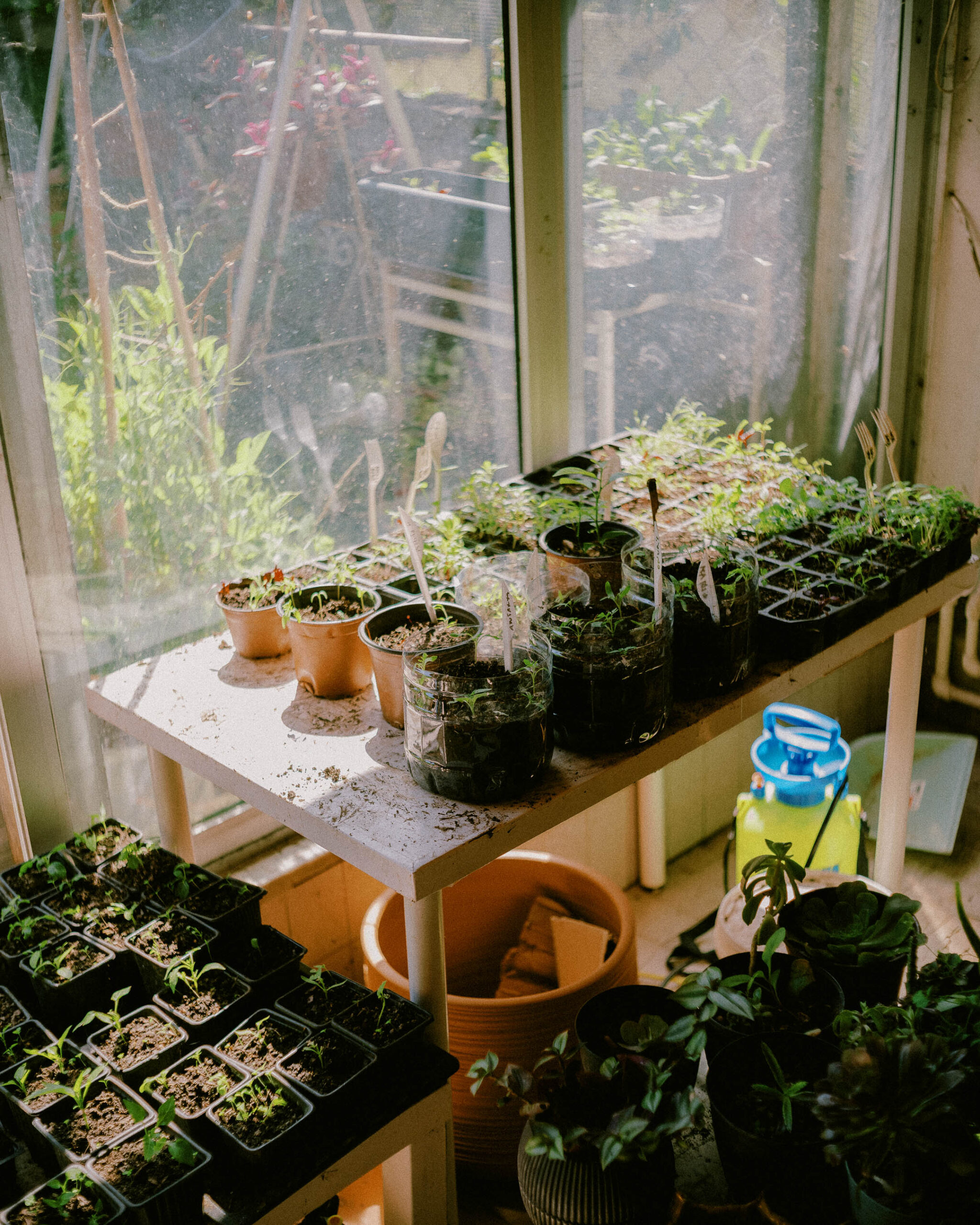
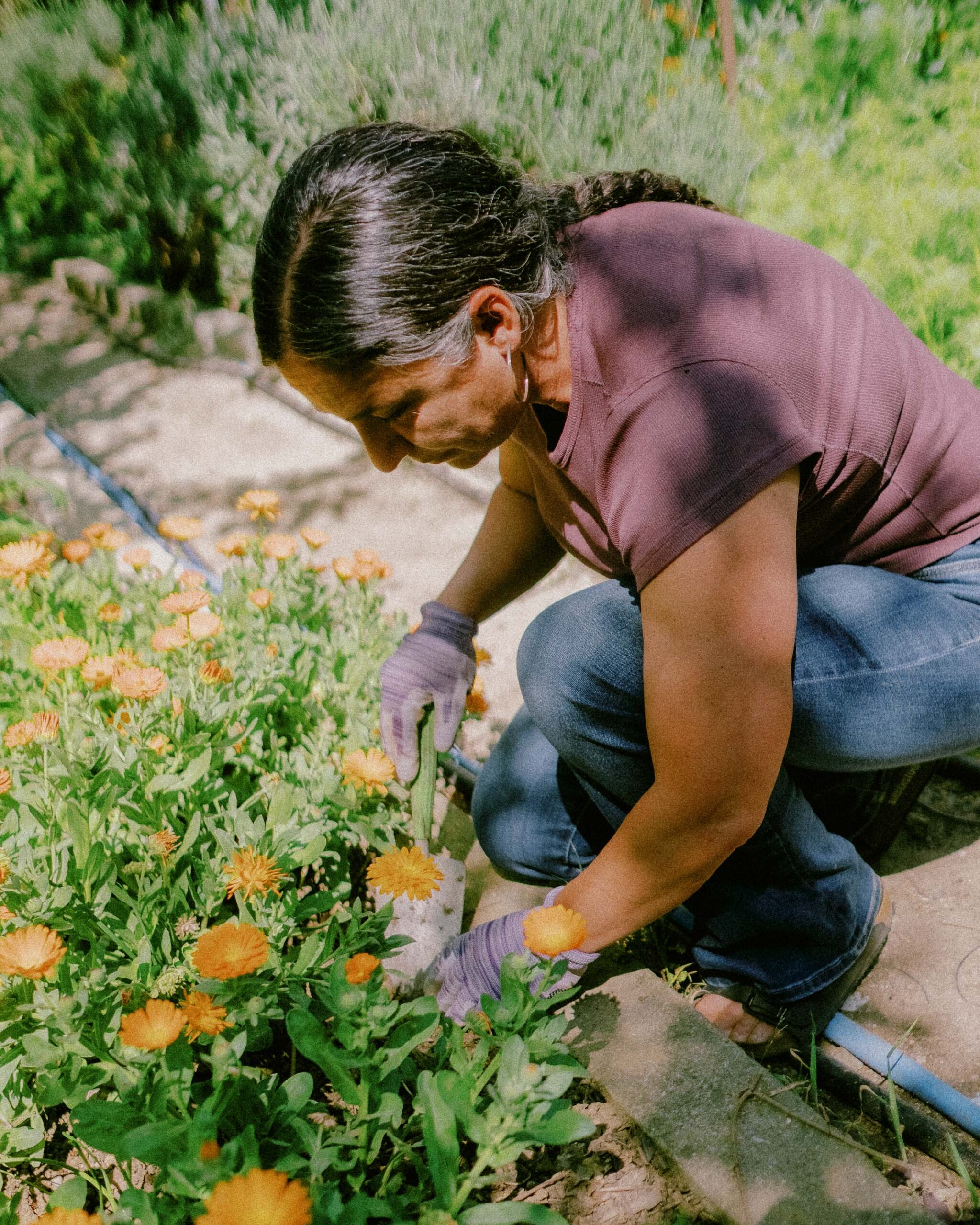
The Relationship with Nature Is More Contagious Than Genetics
You dedicated the book to your mother and father. Does the “gardening gene” come from your family?
Çiçek: Our father was involved in this work through his ideas, critiques, and encouragement from afar, but our mother and her father—our grandfather—were serious gardeners. Not having learned more from our mother is something we deeply regret. As children, we spent only a few days, a few seasons, in the garden with her. Then, as we mentioned, decades passed without a garden.
Çağla: I think our connection to the garden in particular, and to nature in general, is more like a contagious disease than something genetic. Of course, there’s an instinctive connection that lies deep within city dwellers, but when you come into contact with people who love nature, who carry the scent of soil, or who worry about the future of the world, it enters your system like a virus—and it never leaves.
“In the past, especially during the Byzantine and Ottoman periods, Istanbul was a city that produced most of its own food. In the 20th century, the thousands of gardens in Istanbul gradually disappeared, replaced by large neighborhoods, and huge highways were built along the major waterways, and gardens began to be seen as dirty, fly-infested, unwanted places.”
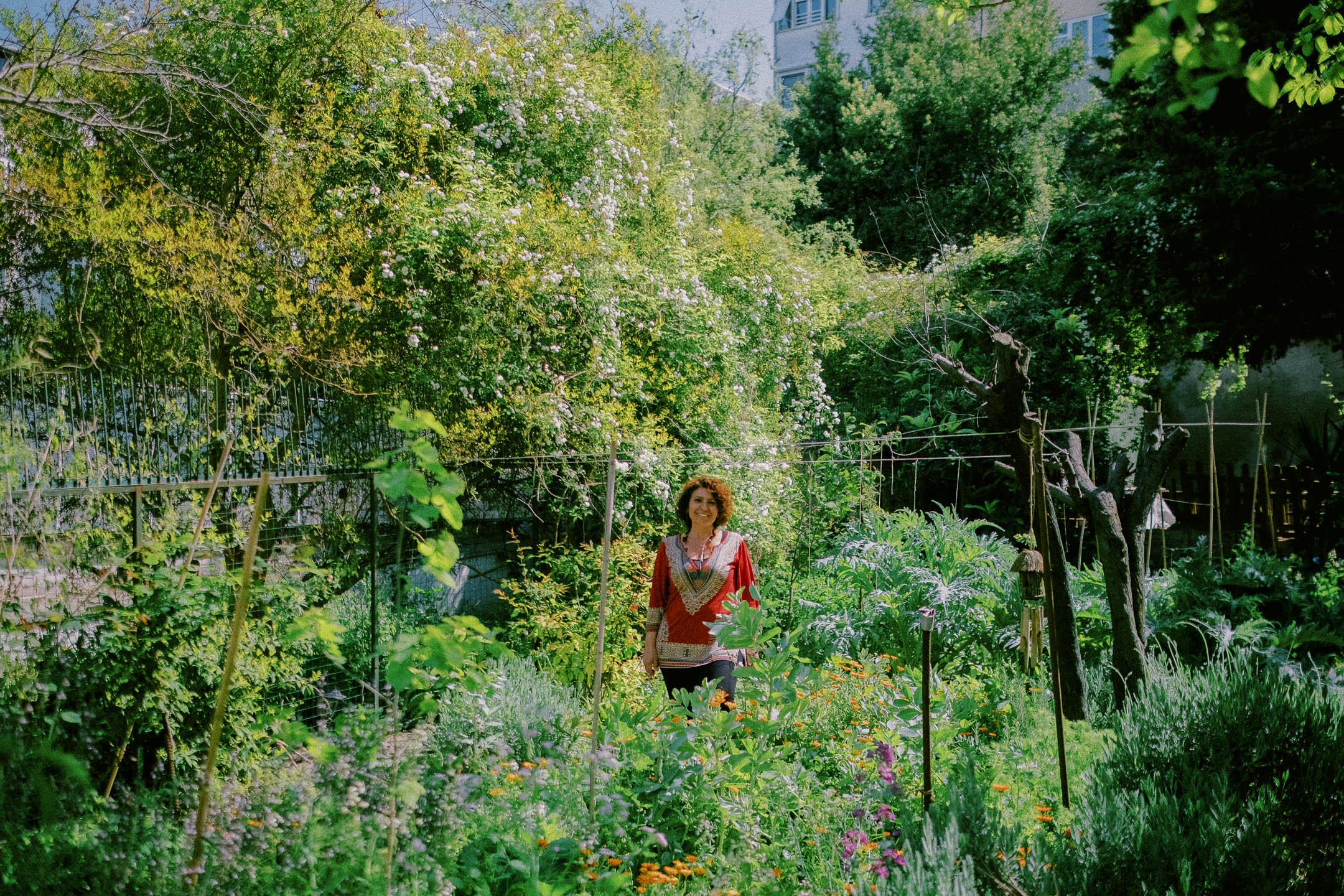
Urban gardening is an extremely important step in terms of sustainable food sources, isn’t it?
Çiçek: Absolutely. Its importance becomes clearer each day; more people are talking about it and getting their hands dirty. In the past, especially during the Byzantine and Ottoman periods, Istanbul was a city that produced most of its own food. In the 20th century, thousands of gardens across the city gradually disappeared, replaced by large neighborhoods, and major highways were built along the main waterways. Gardens began to be viewed as dirty, fly-infested, and undesirable spaces.
By the end of the century, only a handful of “historic gardens” remained, and a significant portion of the mega-city’s food supply began arriving from all over the country. The carbon footprint and resource waste caused by fuel consumption and losses on the roads and in storage facilities are enormous.
Today, the main argument of those who reflect on, discuss, and seek solutions for sustainability and food justice is this: Food should be produced locally, with careful consideration of vital resources such as soil, water, and seeds; it should not be transported over long distances. And even if people cannot produce their own food, they should at least obtain it from local producers. In this context, we believe our book will have fulfilled one of its goals if it inspires even a few people to start a garden in the city, grow their own food, or at least cultivate beautiful flowers and contribute to the city’s wildlife.
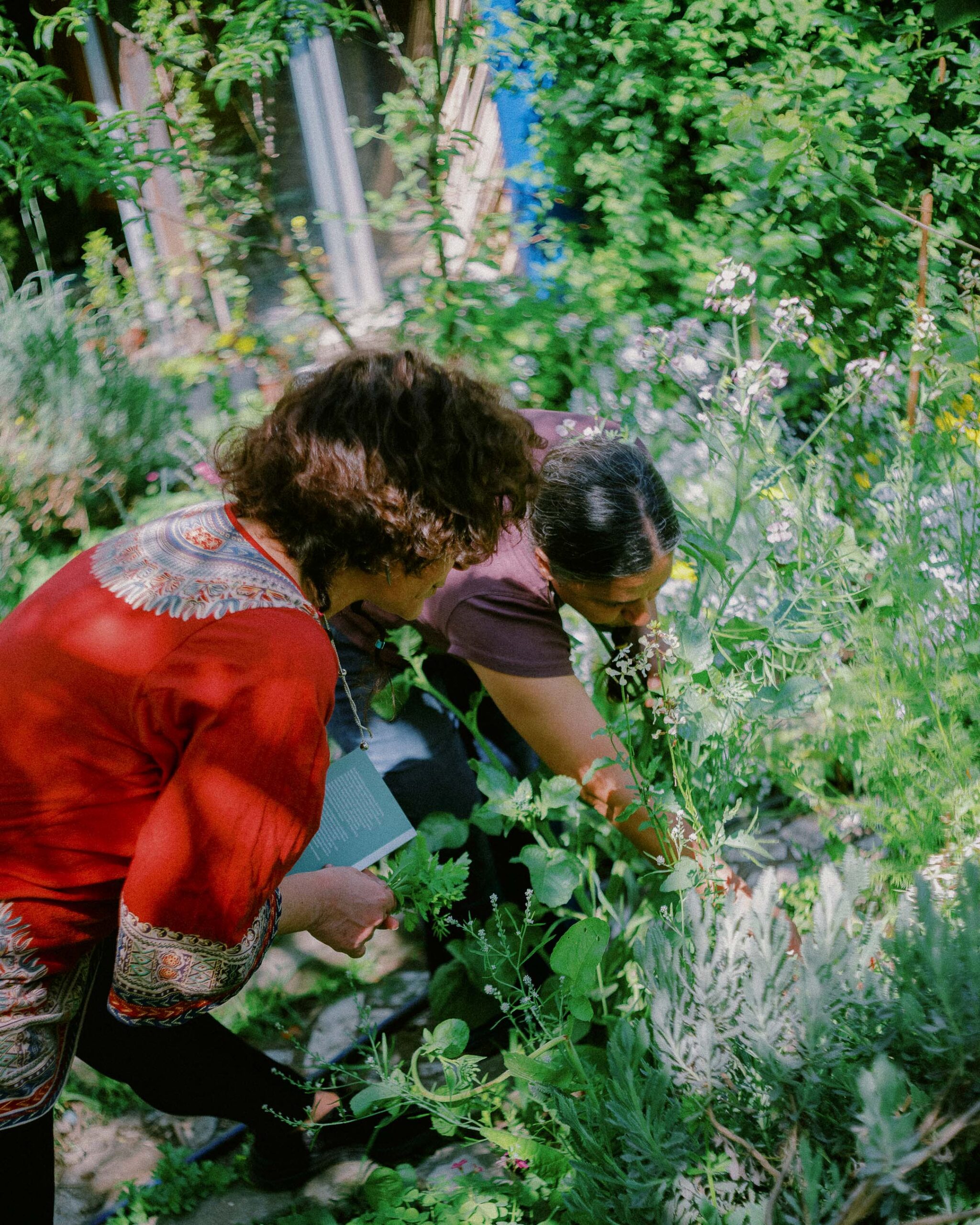
Is Bahçede Hayatlar a reference book for urban gardeners who grow parsley and mint in pots?
Çiçek: Yes, you could say that. In some sections, we explain how to grow individual vegetables and flowers from seed. Some of the plants mentioned in the book can easily be grown on sunny windowsills, in kitchens, or on balconies at home. But readers will also find short essays on topics like the history of Kadıköy, foraging in the city, community gardens, and urban nature walks.
Çağla: We have a dream—to grow a garden that can feed our entire family living in a three-story apartment building. It’s theoretically possible, but we’re only just beginning. Bahçede Hayatlar also tells the story of where we are on that journey. This winter, we made salads using the lettuce, arugula, parsley, fresh onions, and various edible flowers our garden gave us. Now we’re eagerly waiting for the cherries, mulberries, white nectarines, and strawberries. At the moment, we’re deciding which varieties of tomatoes, eggplants, and peppers to harvest this summer. We hope the book inspires others to dream just as boldly.
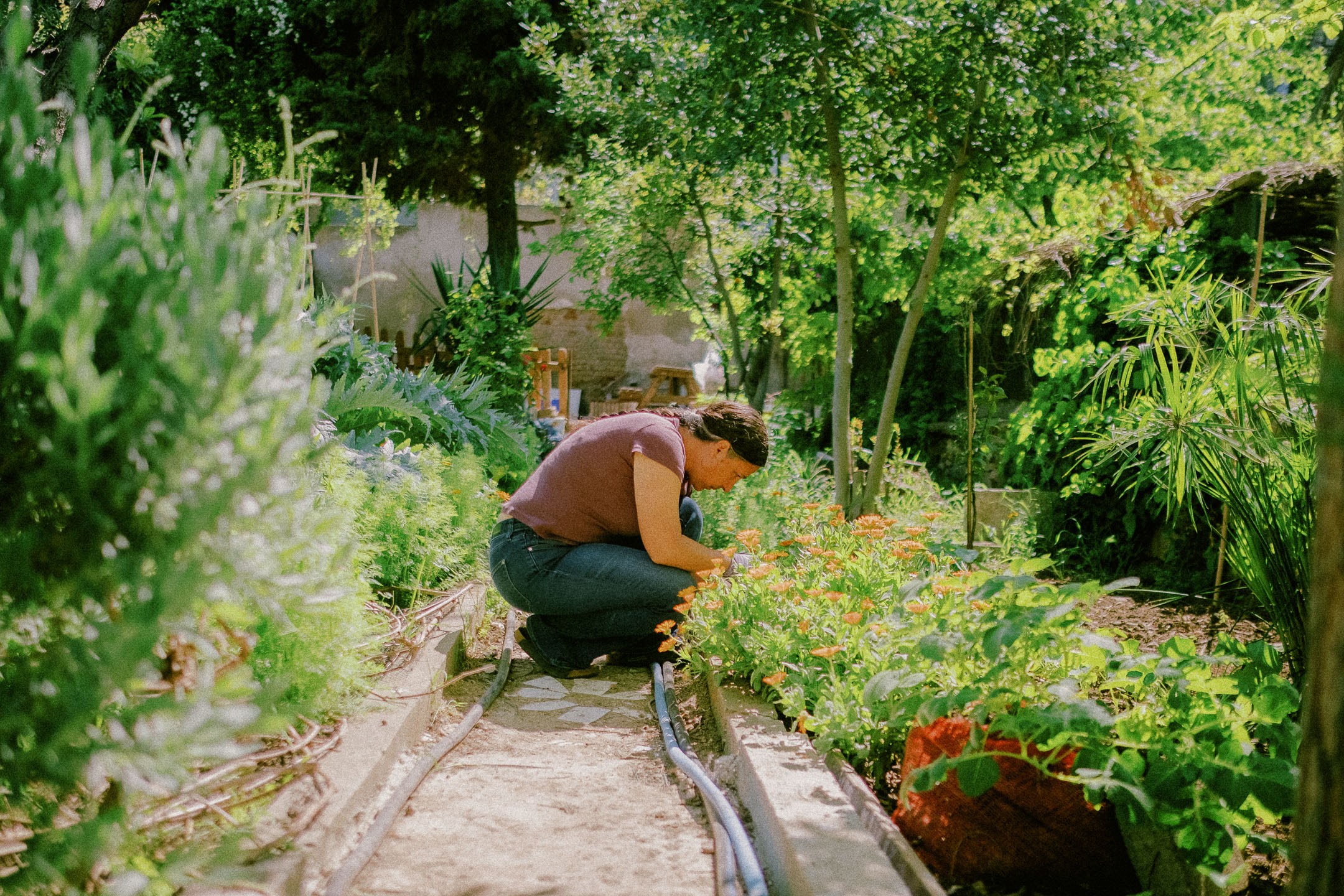
No Garden or Balcony? That’s No Excuse
How can urban gardening be done using permaculture principles?
Çiçek: Permaculture is an approach that can be easily grasped through a simple introductory course and put into practice immediately. But once you begin, it opens the door to a wide range of topics that can gradually be absorbed and applied across many aspects of life. The simplest starting point for permaculture in cities is composting—this can be done in homes, on balconies, in gardens, or even in unused patches of land between apartment buildings.
A larger goal is soil restoration: producing your own soil and contributing to the planet’s soil and carbon sequestration. Another small yet significant step could be rainwater harvesting. People who begin with these modest actions often find themselves designing more complex systems over time—systems that integrate sunlight, water, soil, pollinators, seeds, and many other elements—while upholding the ethical principles at the heart of permaculture.Şehirde yaşayan herkesin bahçesi yok, hatta kentsel dönüşüm yüzünden balkonlar bile tarihe karışıyor, bu işe meraklı olanlara ne tür önerileriniz olabilir?
Çağla: Not having a garden or a balcony is no excuse—not even close. Even the kitchen windowsill is enough. I peel garlic cloves without cutting off their tips, arrange them in a circle with the pointed ends facing up in a shallow glass bowl, and cover them with tap water. Within two days, the cloves start to grow roots that tangle together in the water. After about a week, fresh green shoots appear from the tops. I trim them with scissors as needed and add them to salads or dishes. I can usually harvest them three times this way. Then I bury that dense little garlic island in a pot. If I’m lucky, I’ll get another round of harvest there. It doesn’t smell, doesn’t make a mess, and it’s the most beautiful decoration for the kitchen window.
Put the green end of a potato in a glass container, add just enough water to cover it, and then sit back and enjoy watching it sprout roots and eventually turn into a trailing green vine. Of course, if you’re aiming to harvest actual potatoes, you’ll need to transfer it to a 5-liter plastic bottle or even a soil-filled bag. Even a single tomato seedling in a deep pot on a small balcony can yield impressive results. Plants like lemon, pepper, and onion—just like houseplants—can thrive in closed spaces with some sunlight. Before long, you’ll find yourself searching for soil to plant more or for friends to share your seeds and seedlings with.
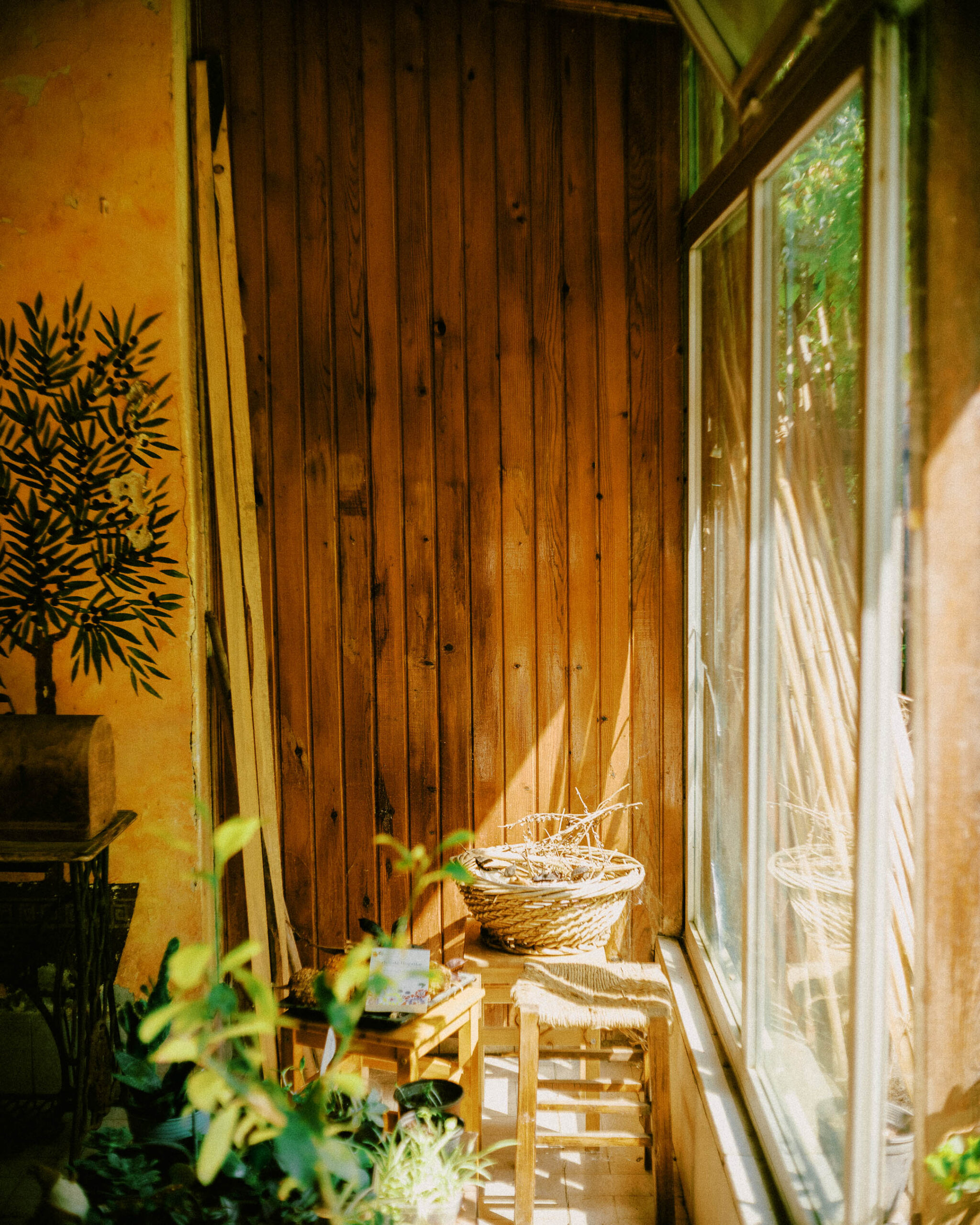
Most Fruit Trees Are a Gift from Birds
Some neighborhoods in Istanbul still have fruit trees in their backyards… If I asked you to map out a walking route of edible fruits across the city?
Çağla: It’s hard to chart a complete route, but we can definitely offer a few tips. Any observant city-dweller walking along the coastline from Moda to Fenerbahçe in April or May will be well rewarded with Malta cherries. Citrus lovers should head to the Princes’ Islands starting in December. There are good alternatives on the Kadıköy side too, but I find the harvests on the islands start earlier, last longer, and taste better. And if you think Karacaahmet Cemetery is just a forest of cypresses, you’re mistaken—it’s a treasure trove of plums. Now is the perfect season to locate the plum, mulberry, apricot, and peach trees. You’ll spot them by their blossoms—just take note of where they are, and come back in a month for your share. As far as I know, most of these trees weren’t planted by people—they’re gifts from birds. Don’t forget to thank them while enjoying the fruit.
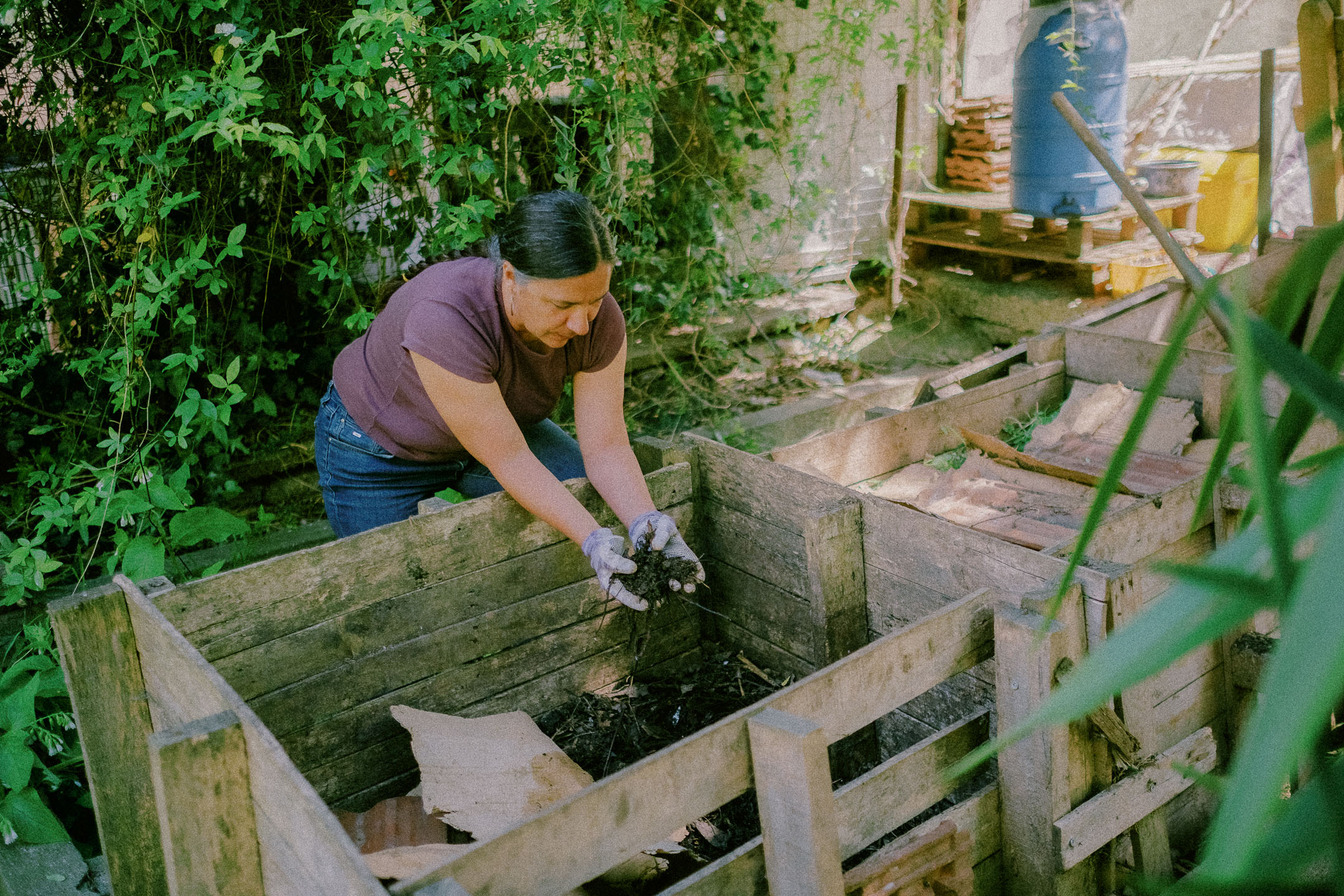
I’d also like to talk about vegetables specific to Istanbul, like Bayrampaşa artichokes and Yedikule lettuce…
Çiçek: Ah, artichokes—we absolutely adore them! Growing these traditional Istanbul vegetables, tracking down their seeds, planting them, and helping them adapt and flourish in your environment (we currently get our artichoke seedlings from the Egyptian Bazaar) is really important. These unique flavors and heirloom varieties are gradually disappearing, replaced by bland vegetables grown from hybrid seeds. Of course, this work isn’t always easy. For example, lettuce that grows beautifully in Yedikule may not thrive at all in Bahariye—or if it does, it might not taste as good. We had an experience like that: one summer, we gave a few cucumber seedlings that we’d grown in Bahariye to a friend in Çengelköy. While they produced a modest harvest in our garden, they flourished in Çengelköy, yielding an impressive crop. There must be something special about that area… Though, to be clear, these weren’t even the well-known Çengelköy cucumbers!
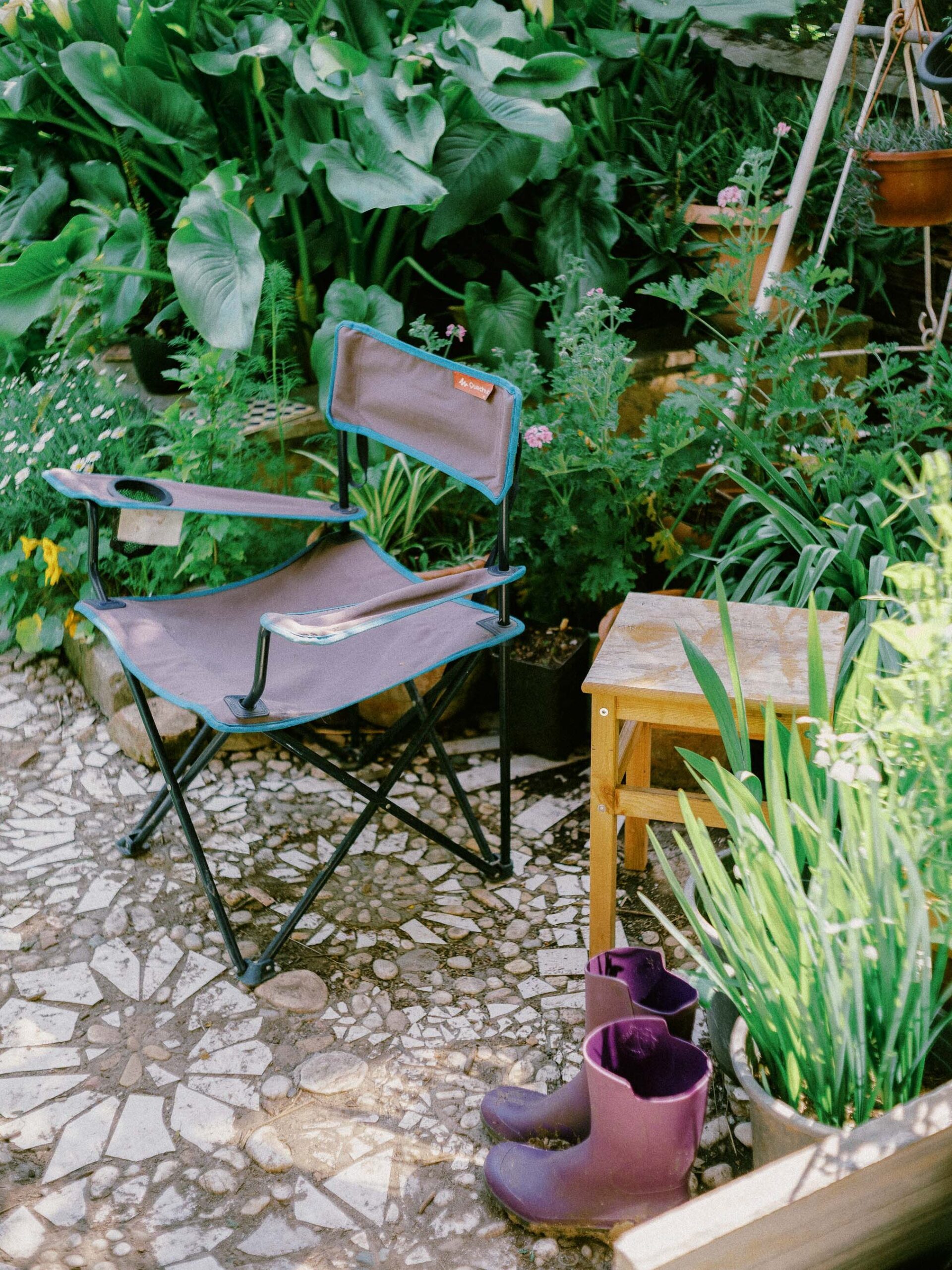
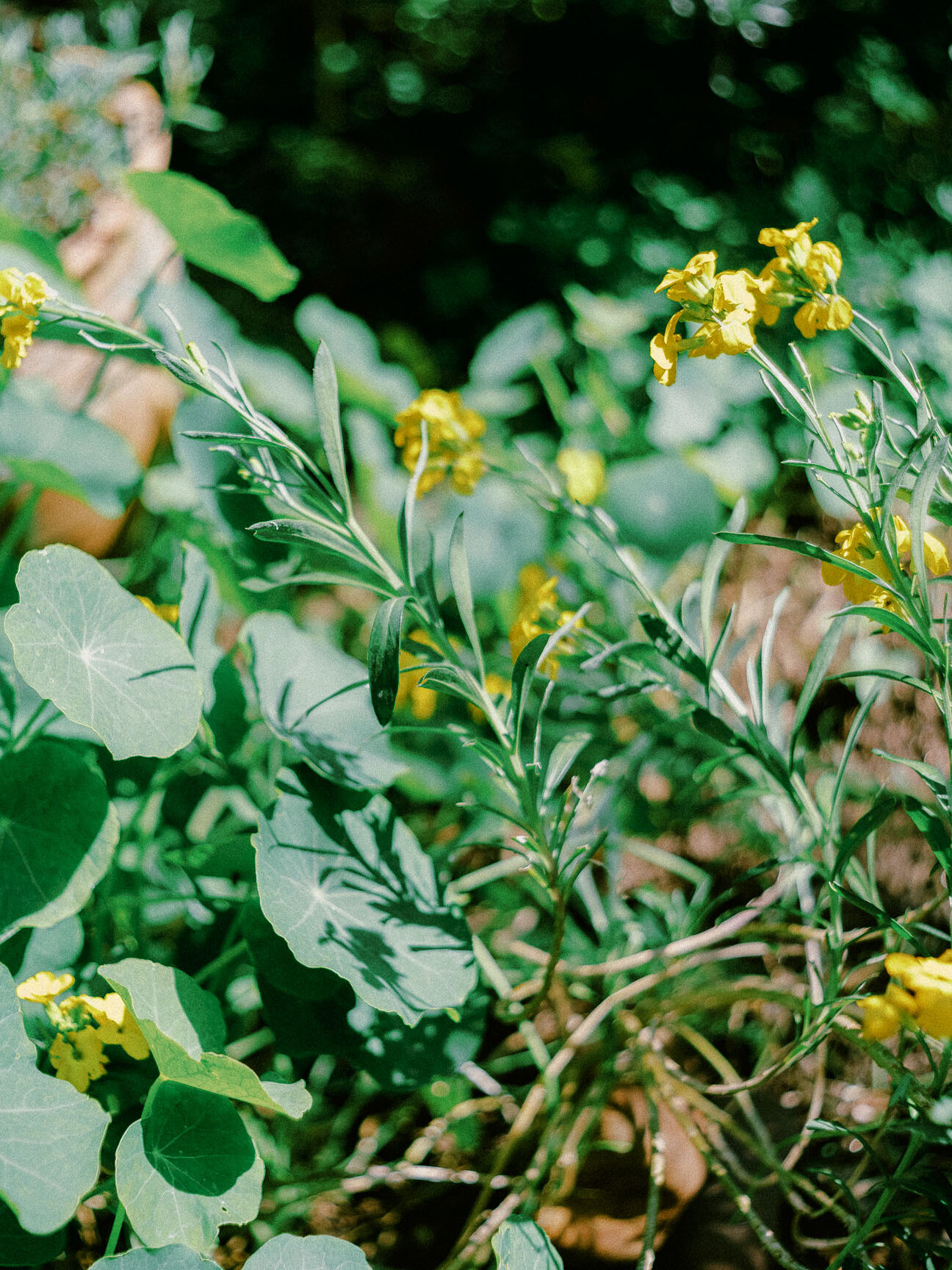
Garden-Friendly Plants
Some flowers are more than just beautiful or fragrant—they’re also edible or great companions in the garden. Shall we talk about some of those?
Çiçek: Definitely. The velvet flower (Tagetes) is one of the first that comes to mind when we talk about companion plants. Its distinctive scent and the substances it releases into the soil repel certain harmful insects and help protect vegetables—especially tomatoes—when planted nearby. If you soak its leaves and flowers in water for a while, you’ll get a nourishing liquid that can be sprayed on other plants to feed and protect them.
The nasturtium is another wonderful companion. Aside from its edible flowers, leaves, and seeds, it attracts pollinators to the garden and makes an excellent ground cover—we don’t like leaving any bare soil exposed. Mustard, black cumin, nettle, turnip, and dill are edible plants that bring countless health benefits. Their roots help regenerate the soil, their flowers are beautiful and bee-friendly, and they work well as green manure. They also contain trace minerals you won’t find in synthetic fertilizers.
And of course, we can’t forget beans when we talk about soil-friendly plants. As we said, bare soil is a no-go. If you plant beans in all the open spots during fall and spring, you’ll be able to harvest fresh beans in three to four months. Plus, they fix nitrogen in the soil, enriching it naturally. We’ve even heard that their flowers and the young leaves from the tips—picked early in the season—are edible. When you harvest those tips, the plants shoot out even more branches, resulting in a bigger crop. You can save some beans for seeds for the next season and turn the rest into a delicious fava dish.
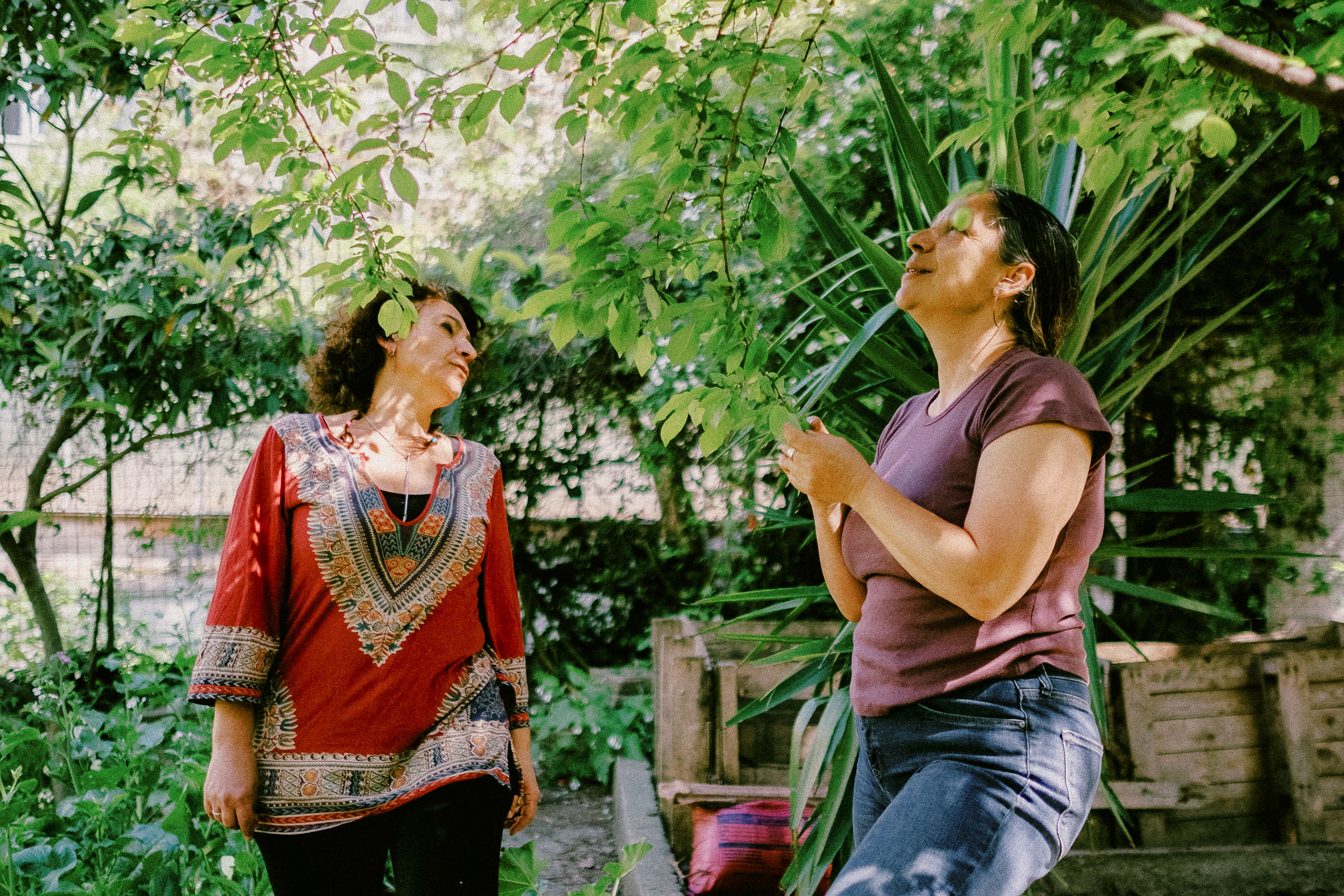
“Sharing and propagating local seeds is one of the most powerful acts of food justice.”
Seeds are a deep and layered topic. How should urban gardeners think about them?
Çiçek: Seeds carry enormous meaning—and controversy. Esra Güven describes it beautifully in her book Tohumların Hamileri (The Guardians of Seeds), published by ALEF. There’s a lot of misinformation, half-truths, and clichés around this issue. Today, conventional agriculture around the world is dominated by large international corporations. These companies profit from selling chemical fertilizers and agricultural chemicals—often labeled as “medicine”—along with unsustainable, lab-produced seeds that farmers are encouraged to buy anew each year.
But imagine if farmers everywhere saved their own seeds, replanted them, and shared them with others. The result would be a world of richer variety: more abundant, flavorful, and resilient crops, grown independently of corporate control. People would eat healthier food and no one would be dependent on distant companies for sustenance.
Urban gardeners, though working on a small scale, are part of this movement. They are farmers too, doing deeply important and honorable work. By seeking out local, sustainable seeds—planting, nurturing, multiplying, and sharing them—they contribute directly to biodiversity, the health of the planet, and the dream of food justice.
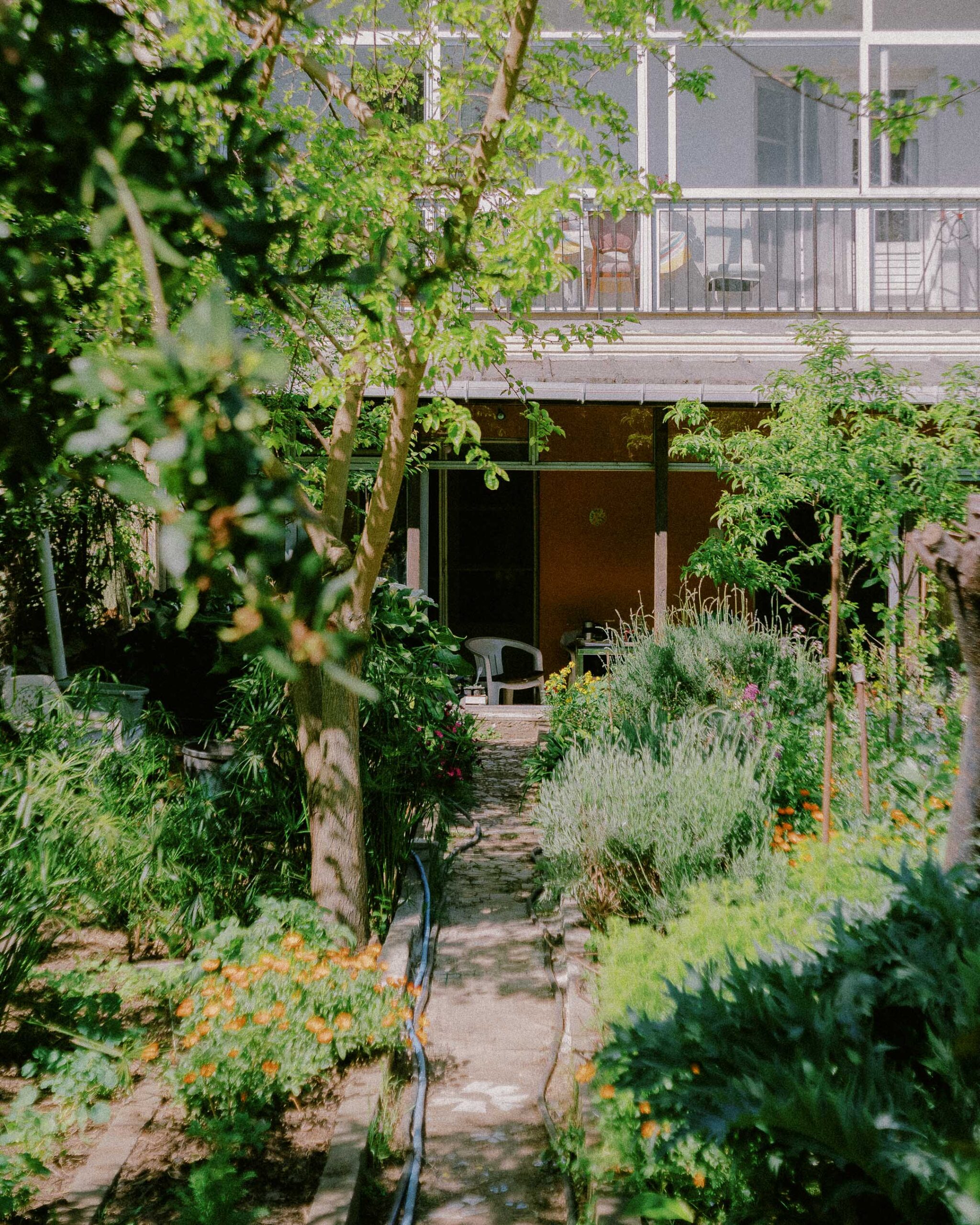
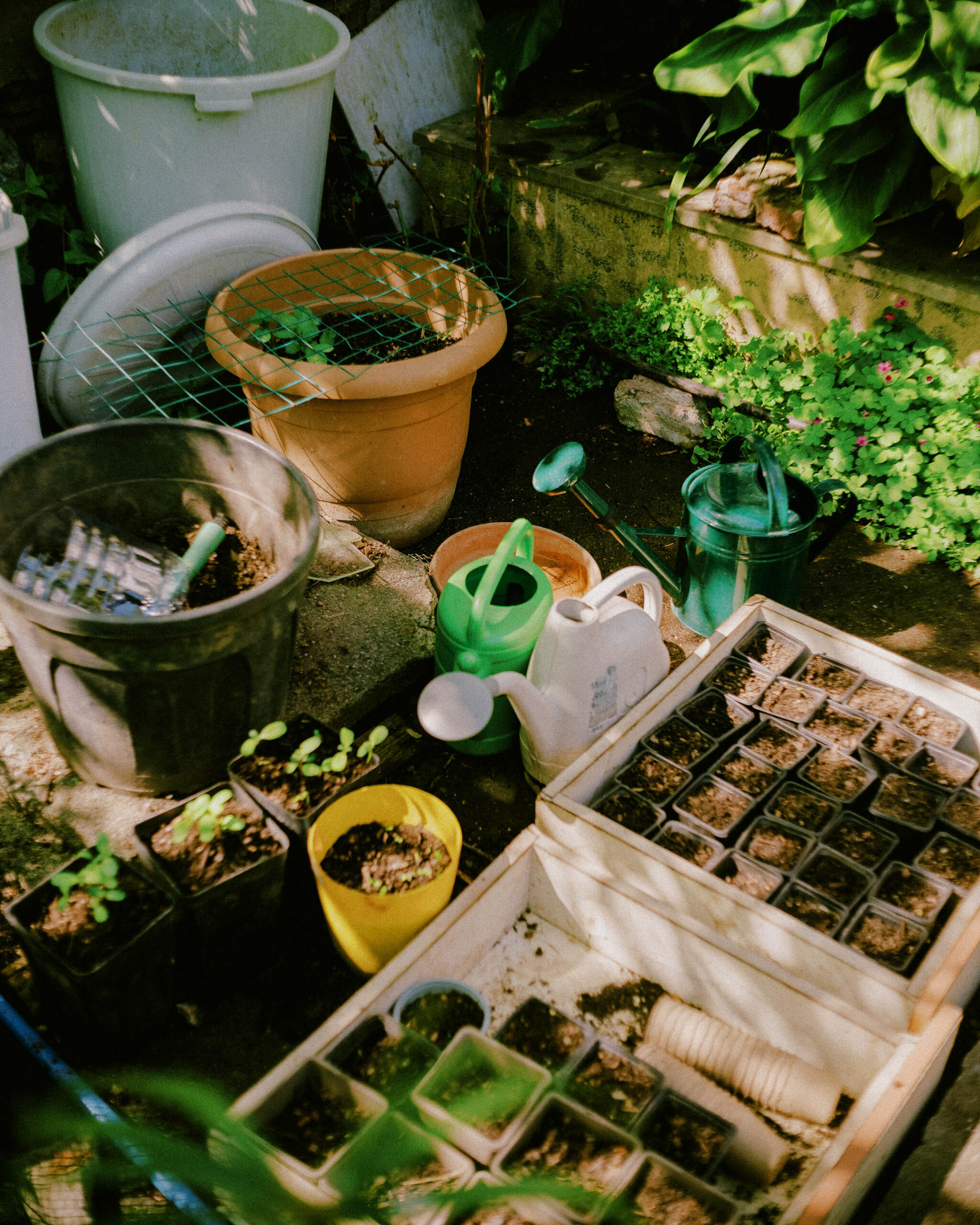
Urban Gardening Tips
Bokashi and Worm Compost
You can easily make your own fertilizer from kitchen scraps. Bokashi opens a whole new world—especially for those with a garden or balcony. All you need is a few buckets and some bran to get started. The process may be tricky at first for those who dislike its pickled scent or lack a place to bury the compost, but there are alternatives. Worm composting, for example, can be done even in small boxes indoors. There’s a composting method for every space and every person. Find the one that works for you and begin today.
Mini Water Rituals
Don’t pour that water down the drain—use it for your plants. Water left from washing vegetables, soaking rice or legumes, or even rinsing out tea or coffee can all nourish your greens. Just skip anything with salt. Even diluted spoiled milk, the bottom of a beer glass, or carbonated water can benefit your plants. A simple infusion of onion skins in water makes an excellent natural spray, perfect for both balcony herbs and garden vegetables. Banana peels soaked in water make a similarly powerful tonic.
Salad Pot
A long window planter is all you need to grow herbs that bring your salads to life: arugula, basil, mint, rosemary, green onions, garlic… And the flowers! Some are not only edible but strikingly beautiful. If you enjoy color and texture, try planting red or purple kale and colorful lettuces. While these grow large in a garden, they also thrive in pots and can be cut leaf by leaf for small, vibrant harvests.
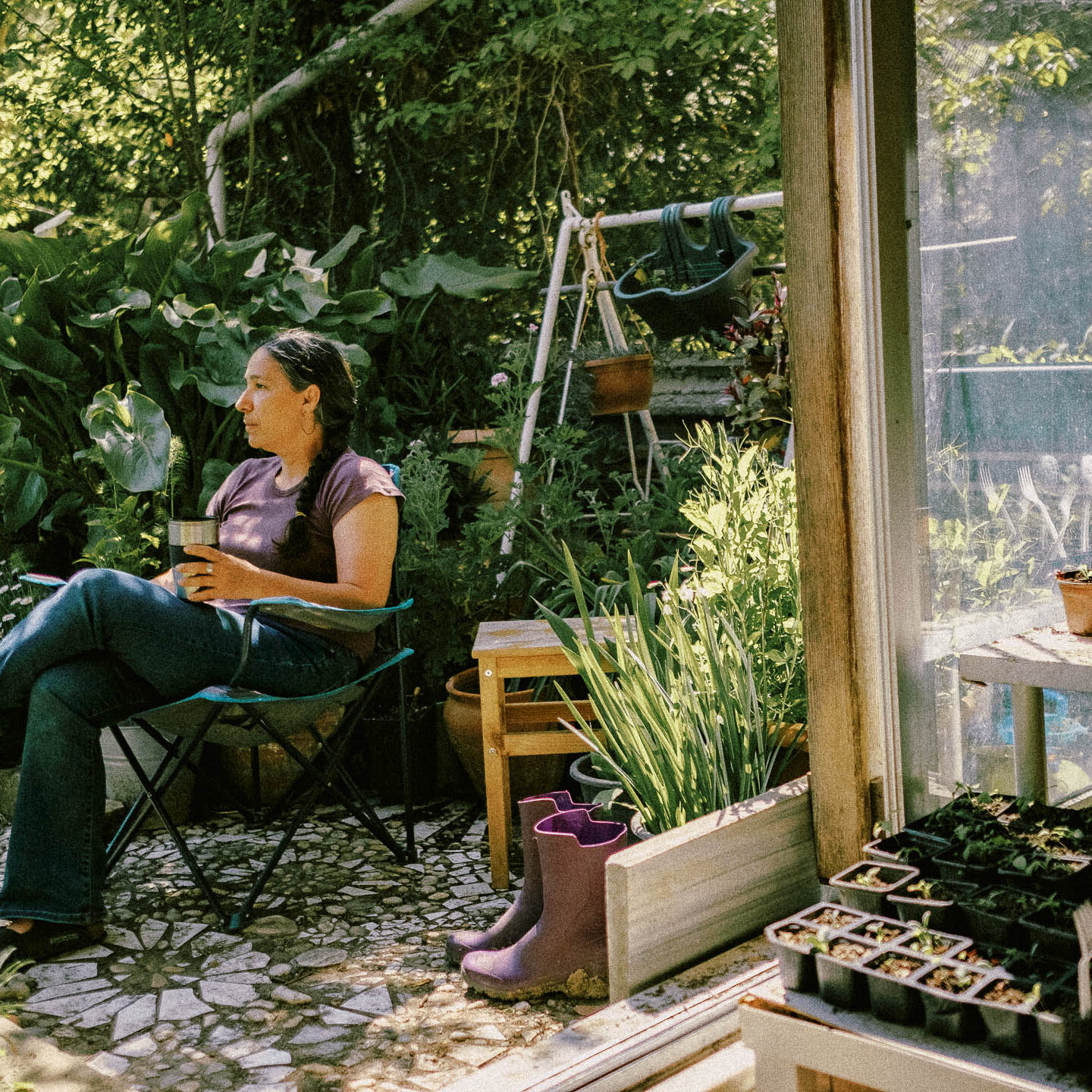
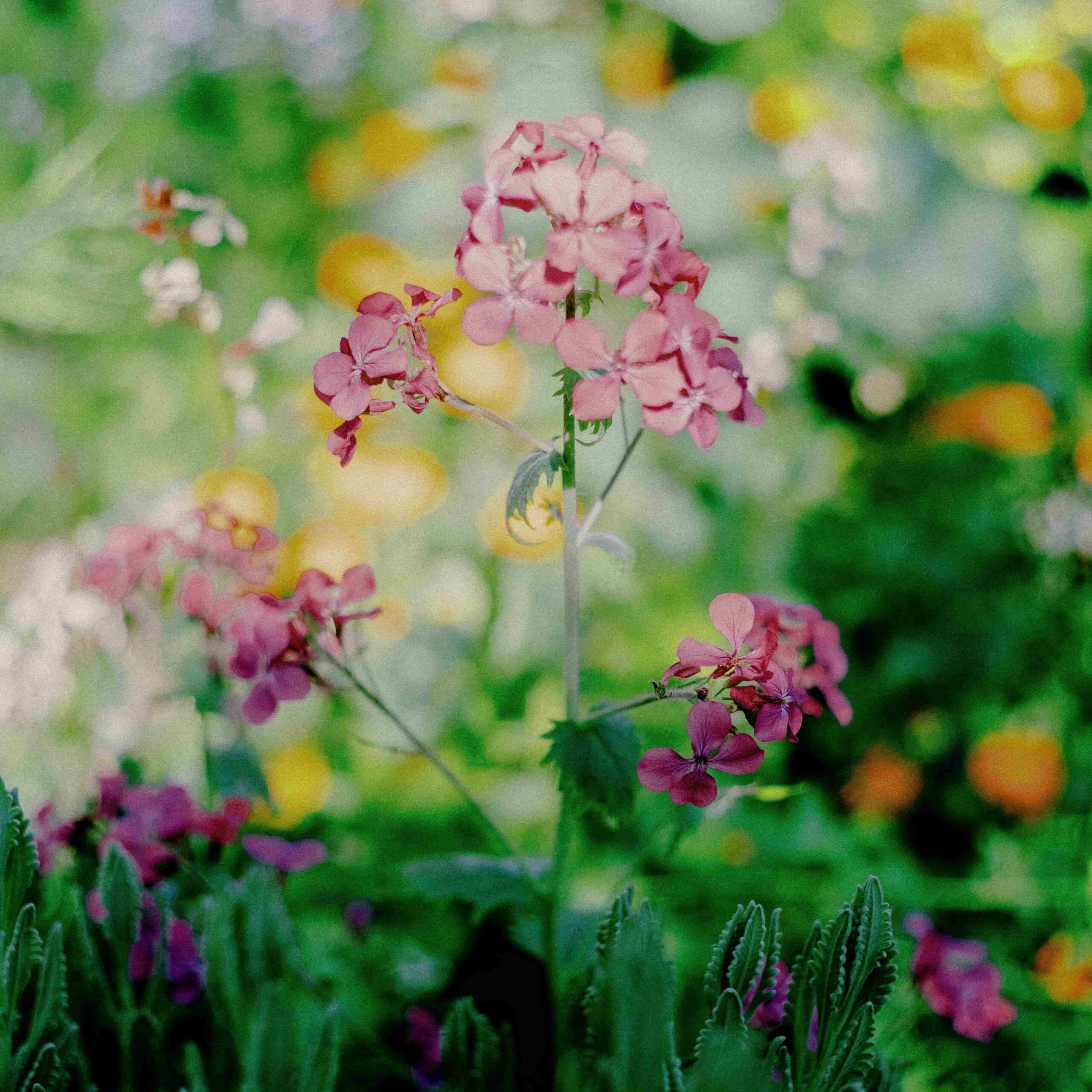
Seed Collection
Once you begin noticing the life bursting through cracks in the city, seed collecting becomes a natural next step. Try sprouting what you’ve saved—see what takes root. You don’t have to be a child to feel joy watching unroasted sunflower seeds grow between layers of cotton. Or seeing a pinecone turn into a tiny tree in a flowerpot. In time, you’ll find that every seed you hold carries the memory of what it will become.
Photos by Yiğit Şişmanoğlu
Journey of Wine and Nature in Urla with Can Ortabaş
Presenting the Forty-Fold History of Baklava
Levon Bağış: “The History of Civilization Emerges from the Journey of the Grape”

